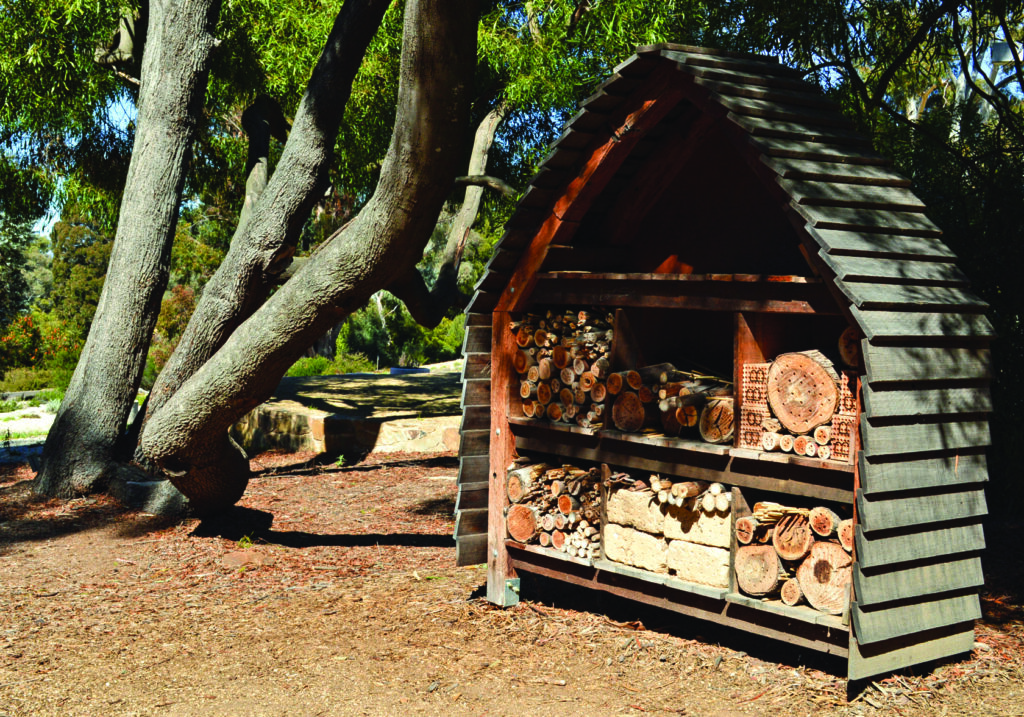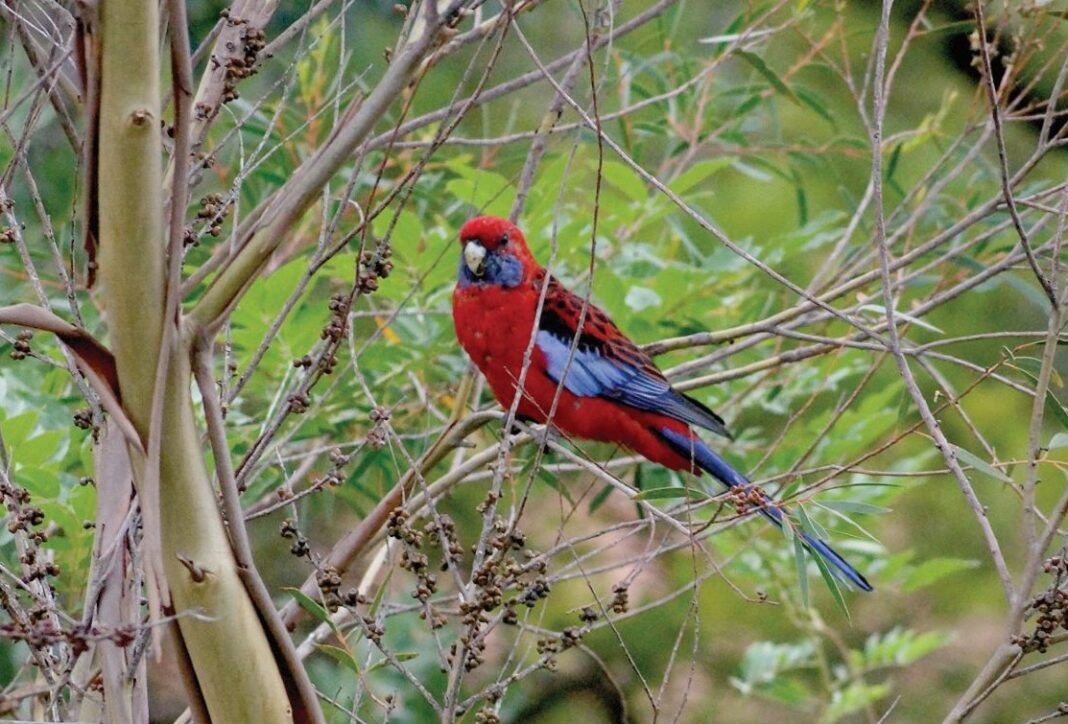Are you designing a new garden or renovating an existing one? Consider a wildlife and beneficial insect-friendly habitat.
The following are some considerations and inclusions for embracing the wild side:

- Promote a more self-sustaining garden eco-system. Every aspect of your garden contributes to its overall health and functionality. Having a diverse garden landscape all but eliminates pest and disease outbreaks.
- Create micro-climates for plants, wildlife and humans. A garden micro-climate is essentially a climate within a climate, which allows you to: successfully grow more sensitive plants; provide protected areas for wildlife and beneficial insects (bees, for instance, struggle with wind, rain and severe weather); sit outside without losing your sunhat and getting a face full of dust!
- Include both summer and winter friendly areas from which to enjoy your wildlife-abundant garden. Consider whether you want to view your living palette from above, below or in amongst it.
- Include wildlife housing such as insect hotels and bird boxes.
- Provide reliable and clean water sources in multiple locations throughout your garden landscape: birds require protected drinking stations with clear vantage points for their security and in close proximity to ‘getaway’ plants to escape predators; lizards appreciate shallow drinking bowls at ground level and adjacent to hollow logs and rocks for their safety; bees and beneficial insects require water, too – fill water dishes with pebbles to create a safe place for them to land and to prevent drownings. It is important that water baths are cleaned regularly to prevent the spread of pest and disease problems.
- Utilise a range of multi-purpose native plants with differing heights, shapes and sizes, and which provide habitat and a food source for an array of wildlife and beneficial insects. Include plants which flower and fruit at different times to ensure a reliable year-round supply.
- Many exotic plants also provide food and habitat for wildlife. I have regularly observed rosellas feasting on rosemary and salvia flowers in my garden. The flowers and seeds of countless vegetables, herbs and ornamental flowering plants are also more than popular with bees and other beneficials.
- Go pesticide-free wherever possible. Many pesticides, including some organic products, can be toxic to wildlife and soil life. If using pesticides, apply strictly as directed and avoid spraying when bees and other beneficial insects are foraging.
- Get your neighbours involved; creating extended corridors of wildlife-friendly habitat makes it easier and safer for creatures and beneficials to get around.
- Don’t be too tidy; nature appreciates areas of rocks, logs and thick natural mulches. Balance this with visibility and fire risk.

Further reading
Attracting Butterflies to your Garden by Densey Clyne (2011 ed.), ISBN: 9781877069840.
Bee Friendly: A planting guide for European honeybees and Australian native pollinators by Mark Leech (2012), ISBN: 9781742543697. Also available as a free e-book.
Birdscaping Australian Gardens by George Adams (2015 ed.), ISBN: 9780670078707.
Canberra Ornithologists Group [canberrabirds.org.au] provides lots of info and references regarding local birds, their identification and call sounds, bird walks, etc.
More stories:



